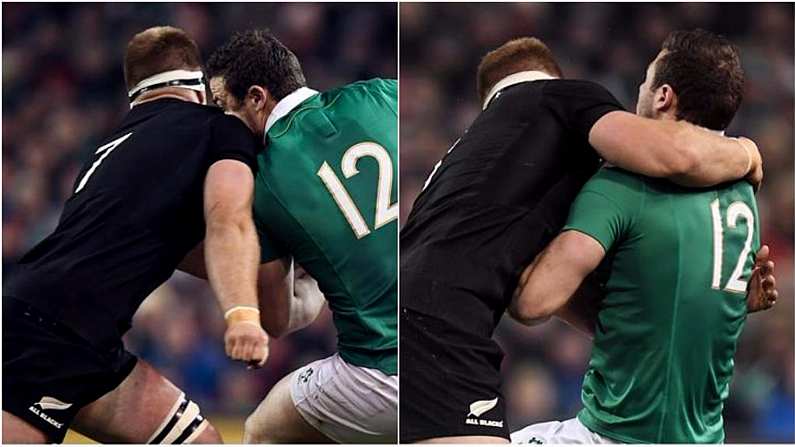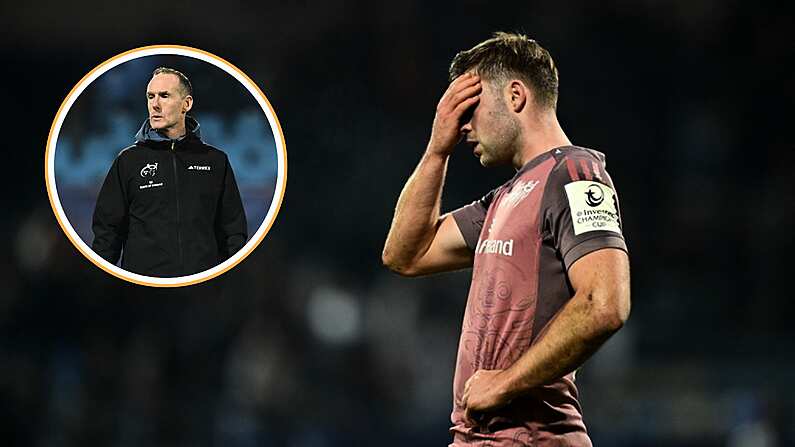There are some new rugby tackle laws, in addition to the experimental laws that came into effect on January 1st.
The laws have been introduced with an aim to reduce the likelihood of head injuries, and they come to effect from today, January 3rd.
Here's how they work.
New Rugby Tackle Laws
They cover tackle both 'reckless' and 'accidental', meaning that distinguishing between both will be one of the main incumbents upon referees in 2017 when taking into accounts the new rugby tackle laws. Here's how they differ in terms of the legalese:
Reckless Tackle
A player is deemed to have made reckless contact during a tackle or attempted tackle or during other phases of the game if in making contact, the player knew or should have known that there was a risk of making contact with the head of an opponent, but did so anyway. This sanction applies even if the tackle starts below the line of the shoulders. This type of contact also applies to grabbing and rolling or twisting around the head/neck area even if the contact starts below the line of the shoulders.
The minimum sanction is a yellow card; the maximum sanction a red.
Accidental Tackle
When making contact with another player during a tackle or attempted tackle or during other phases of the game, if a player makes accidental contact with an opponent's head, either directly or where the contact starts below the line of the shoulders, the player may still be sanctioned. This includes situations where the ball-carrier slips into the tackle.
The minimum sanction is a penalty, with no maximum punishment outlined.
This would mean, for example, that Sam Cane's high hit upon Robbie Henshaw last November would have been punished by at least a yellow card.
The fact that reckless tackles will be punished more stringently than ever will mean that players rushing up to prevent offloads will become less frequent, given that the tackler will be punished for contact with the head, regardless of intent.
It all means that games will likely be more open, meaning we may well see Joe Schmidt's Ireland toss the ball about a bit more often than usual in the Six Nations.
Dr. Barry O'Driscoll appeared on Off the Ball this evening, and while he admitted that this a step in the right direction by World Rugby, he believed it is still not enough to curb the frequency of head injuries in rugby. He cited the trial of a new tackle technique currently being trialed in the Southern Hemisphere as an example of the direction the sport is going. The technique in question considers any hit above the nipple line to be a high tackle.
See Also: What's Next? - Chronicling The Evolution Of How We Consume Sport
See Also: Yet Another Twist In The Bizarre Johan Goosen/Racing Saga
See Also: Things Got Very Awkward Towards The End Of Richard Cockerill's Leicester Reign













